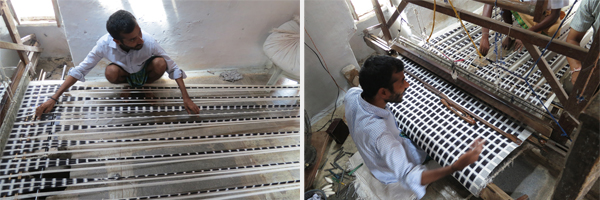Woven Wizardry
August 05, 2017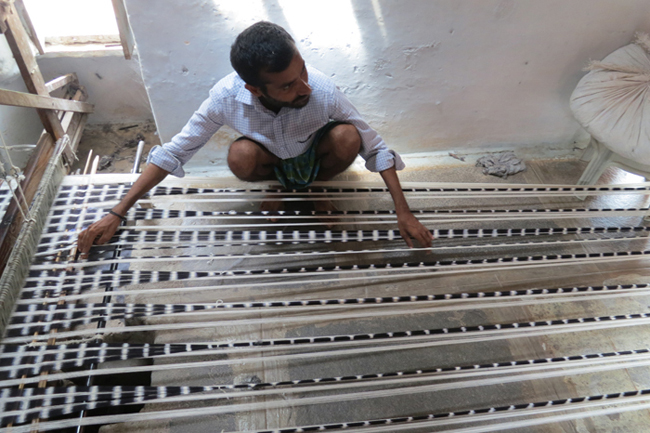
The first clue that you're going to someplace special is a sound. Even before you're in the village you hear a mysterious "clack clack clack."
When you arrive at the white-washed homes flanking a broad street, you see other signs: piles of brightly colored cloth, long threads stretched down the street, hooks hanging over vats, and a variety of wooden frames and structures.
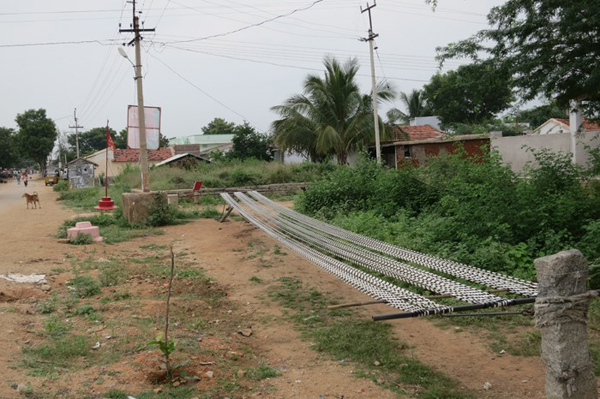
This village, a couple of hours from Hyderabad in southeast India, is home to ikat artisans. Everywhere you look you see people involved in some aspect of this age-old technique of dyeing and weaving cloth. Much of the work takes place outside, as long threads need a lot of space to be stretched and tied and dyed and dried in the sun. (Rainy season is obviously a big problem.)
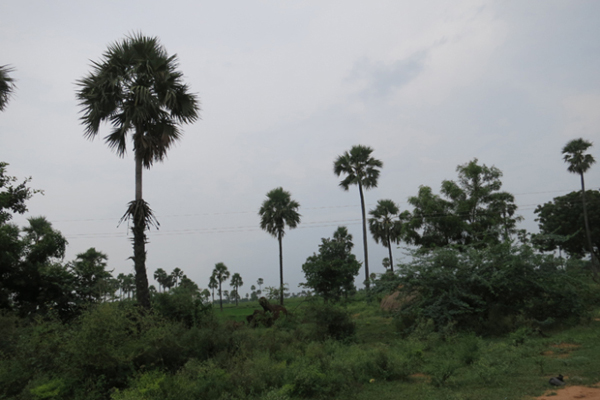
But a lot happens inside these homes, too. You can trace the clacking noise to the pit looms which take of half the interior. They share space with spinning wheels as well as the paraphernalia of everyday life. Ikat is not just a family business; it's a way of life.
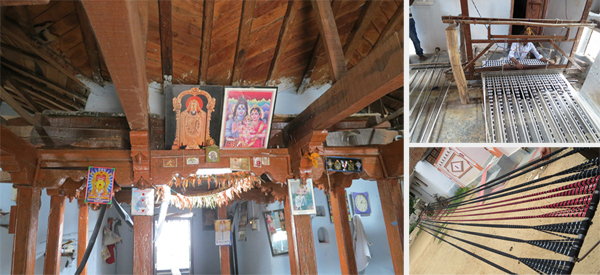
Ikat is an extremely time- and labor-intensive process... which results in textiles of unique beauty. Whereas most fabrics are woven and then dyed, ikat reverses the order. Artisans dye the threads first, visualizing where the colors will fall when the warp and weft are woven together.
Threads are bundled, tied with a dye-resistant material, and then dyed. The process can be repeated for more colors or more complexity. For single ikat, the warp threads are tied and dyed with the weft left natural or dyed a solid color.
In double ikat both are dyed. The goal is to have the planned pattern come together in the woven piece. If there has been a miscalculation in the tying and dyeing, or if the weaving has been inconsistent, the design will break up and weeks of work will be lost. In a successful ikat the design motif will be intact, with a slight feathery edge reflecting the process.
Each textile, even in the same pattern, is always just a little different. Many manufacturers who love the look of ikat are producing fabric printed with an "ikat" design complete with the characteristic fuzzy edges. But these mass-produced items lack the human touch and the enduring quality of true ikat.
Want to see if it's the real thing? Simply turn the cloth over. Authentic ikat's woven design will be on both sides whereas a print will have a plain back.
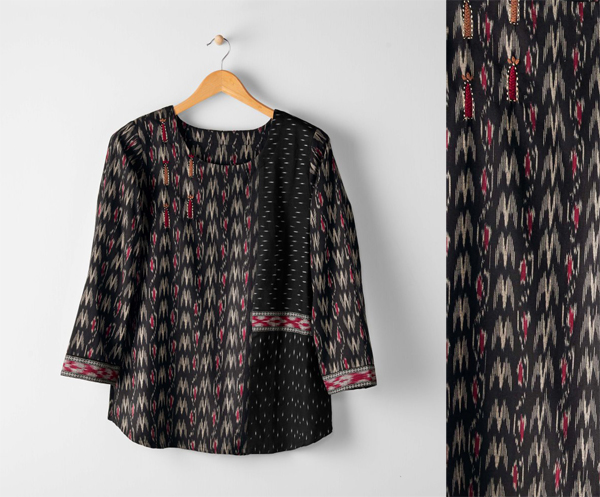
It takes a lot of time and expertise to produce a piece of ikat, but it's worth it to create this unique and wonderful fabric.
It all begins with preparing the yarn. Cones of yarn are fed into a large spinning wheel, which separates the threads. The gigantic wheel is in a pit dug into the floor of the home.
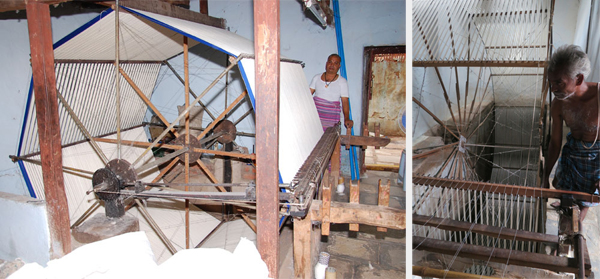
The threads need to be measured and counted to make sure that the fabric width fits the requirements for the final textile size and pattern scheme.
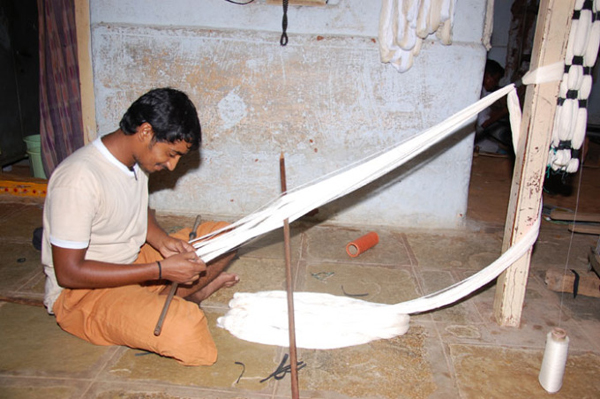
After the threads are laid out, the artisan marks them to indicate which areas should be tied off. These areas will resist the dye and create the pattern.

Bundles of warp threads are tightly tied in the specified areas, using strips cut from old bicycle tires or some other dye-resistant material. The size of the bundles depends on the planned pattern.

The tied bundles are dipped in dye vats and moved around to make sure the color saturates the uncovered parts.
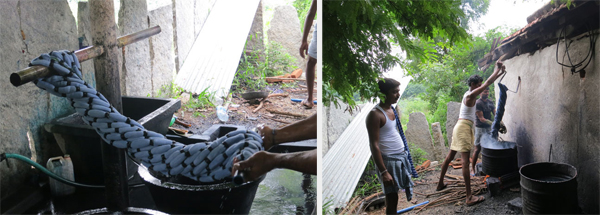
After dyeing, the rubber ties are removed to reveal that the dye has not penetrated the areas underneath. For multiple colors and more complicated designs, the entire process can be repeated.
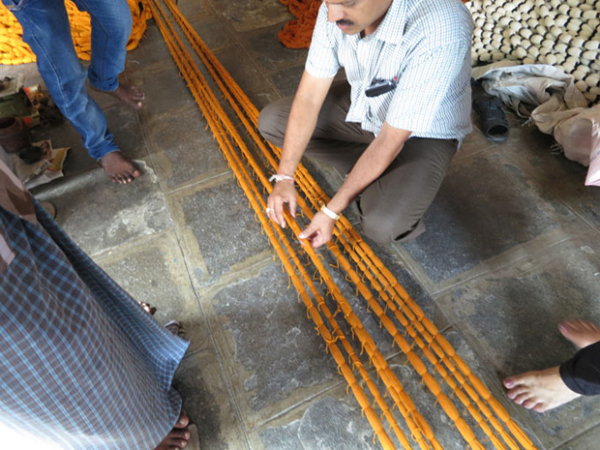
The dyed threads are dried. Walking around the village you see a festival of colors and patterns as different creations are stretched out along the road and countryside.
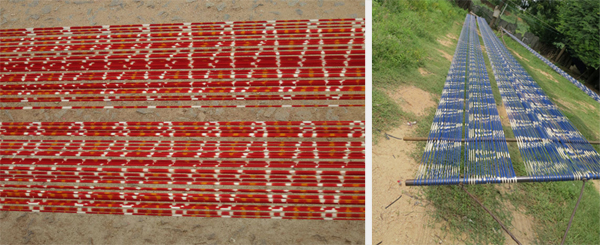
The weft threads are prepared. In single ikat this yard is a solid color, often natural, while in double ikat the weft would also be tied and dyed. The photos below illustrate the 3 steps for making single thread for the weft.
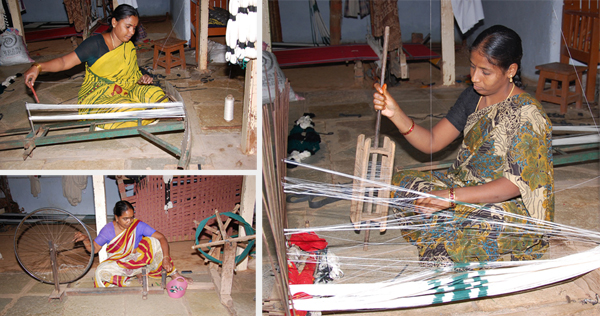
The yarns are strung on the loom and the magic begins! As the loom marries warp and weft, the amazing pattern comes together.
